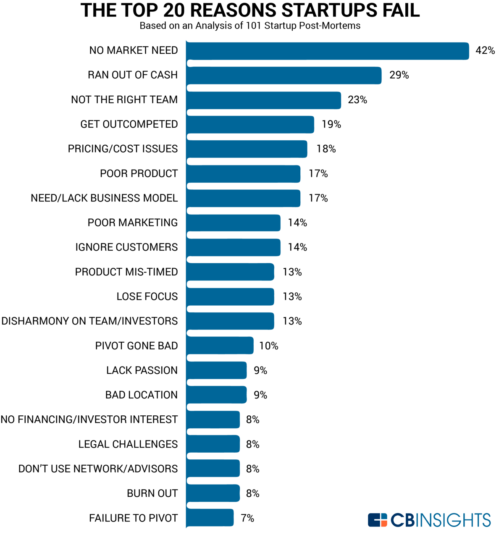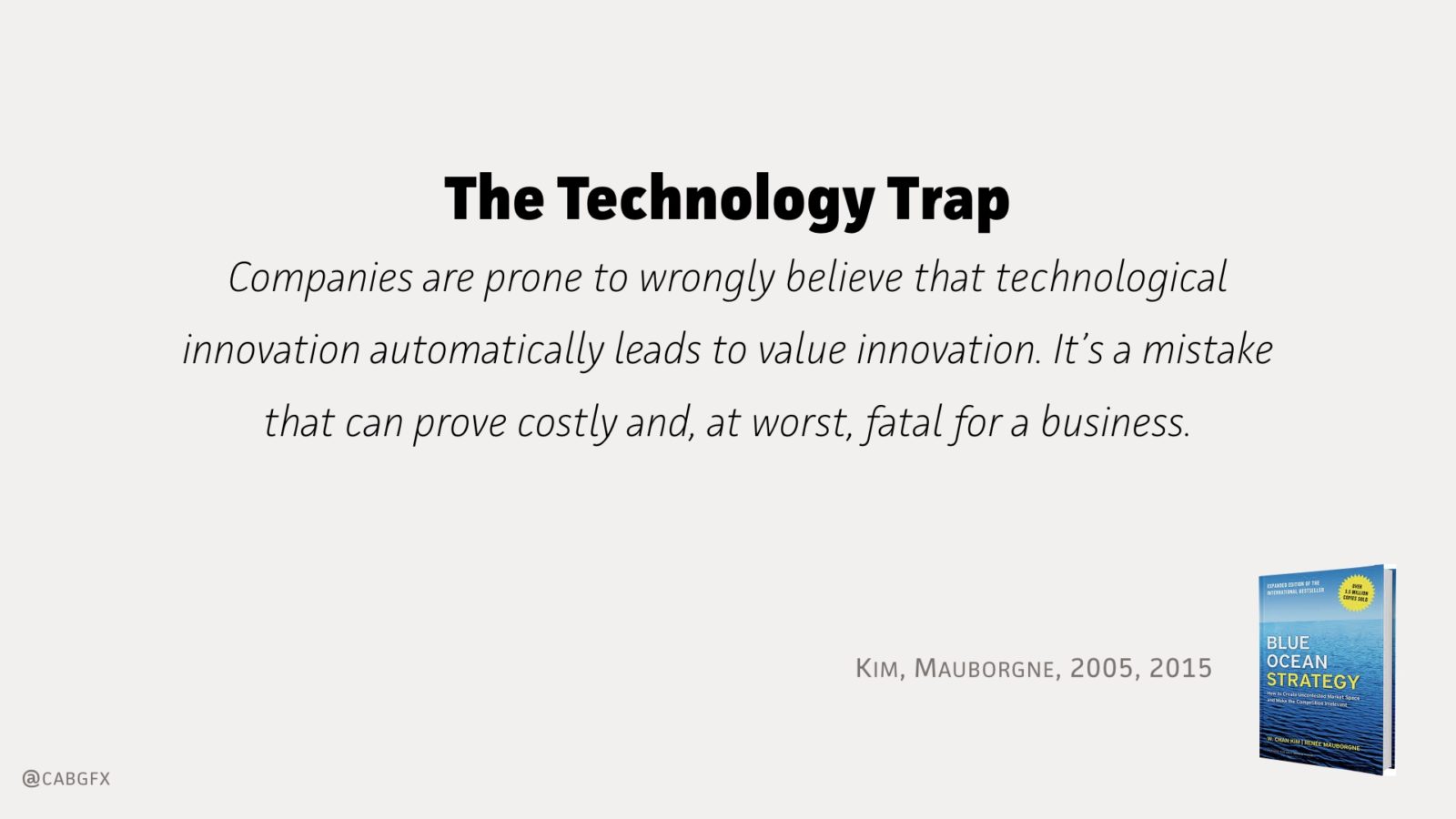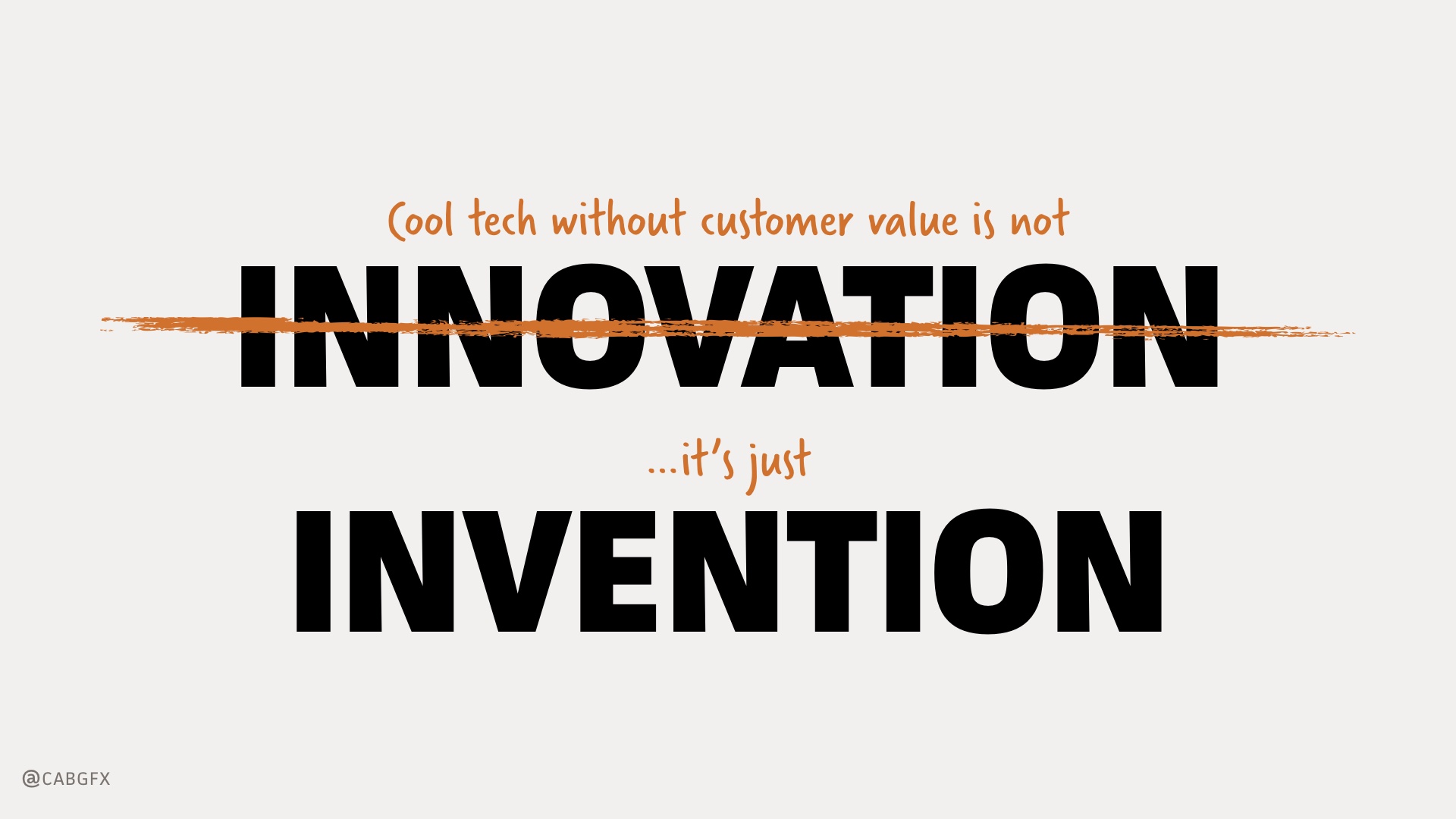Somehow, we keep telling ourselves stories: “This is just a small project, we can build it quickly and learn from there”, “People want to do it like this”, “This feature will be a key part of the user experience”, “We beat the competition by bringing killer products to the market.”
We have data to drive these decisions, sure. And our data has a lot of stories to tell. But people are not numbers. Do we really know our customers, and the struggle behind their motivation to sign up, to purchase from us, or leave us?
What might we learn from listening to real customers?
—
Less tech, more talk
In a recent survey of 101 startups that went under, CB Insights asked about the reasons why. The number one reason startups fail? “No market need”.
Ouch.

Building products, let alone a business, is hard work. But strategies, products and companies fail, because technology alone won’t cut it.
Technology moves us forwards as humans, but the tech is not what creates progress for us. It’s the capabilities we gain; the things we can do now, that we couldn’t before. The big picture stuff, as well as the day-to-day.
Technology is only relevant because of the reasons we get it in the first place. What are the reasons for using your app? What problems are you helping people solve?
What outcomes are they seeking from using your solution?
Why are you hired?
When we bring products or services into our lives, we do it to make other things happen. We don’t just buy products for the sake of buying them.
Demand is generated when people identify struggle in their lives. Something that we want feels too hard, too cumbersome, or even impossible. But if it’s important enough, we will look for solutions to get the job done, so we can find out what’s next.
Things happen in our lives (or might happen), which causes action on our part. We want—or need—to achieve or prevent a certain result, and in doing that, we expect an outcome. When we’re satisfied with that outcome, we consider the job done. That is the end goal. Not the solution we used to get us there.
Why do your customers buy what you have? Is it all that hard work you put into your product, dutifully improving on it, to make yours the best it can be? Is that why customers pony up? Or is it because they need what you have, to get something they want?
At the end of the day, your product is simply a means to an end for your customer. Humbling, isn’t it?
—
Decades ago, two people were carrying out research to uncover answers to the same question: Why do some companies fail, and others win? What sets them apart?
The insights discovered by these soon-to-be professors of strategy and management, Renee Mauborgne and W. Chan Kim, were published in acclaimed journals, notably the Harvard Business Review. It ultimately evolved into the Blue Ocean strategic framework, published in 2005 [1] by Harvard Business School Press. Their writing is now mandatory reading at business schools the world over, and both Kim and Mauborgne hold top leadership positions at Bloomberg’s no. 1 Business School of 2017.

A core principle of Blue Ocean strategy is the concept of Value Innovation. Described as strategic logic, it says that innovation is created when companies create exceptional customer value at dramatically lower costs. This creates uncontested market space (a blue ocean), where competition matters little, because the product is simply superior to any other solution.
The key point is that innovation is created by innovating on value, not simply technology. In its entirety:
Companies are prone to wrongly believe that technological innovation automatically leads to value innovation for customers and users. It’s a mistake that can prove costly and, at worst, fatal for a business. Many a company with the most mind-blowing technology on the market has capsized, often despite abundant access to resources and skills.
What defines value?
When we put value on tangible things, such as products we buy and use, that value is measured in outcomes: What does the product enable in our lives? It might be simple, day-to-day, stuff; a tiny win, a headache gone, a future one avoided, a little energy restored after a long day. And it could be something huge, life-altering: people make grand investments all the time—financially, or otherwise—to achieve their goals in life, and the defining experiences around them.
Regardless of impact, products—in and of themselves— are not solutions. We only hire products and services to get a job done for us, at home, work and everywhere else. Getting that job done means getting to a result; the outcome your customer is looking for. That’s what matters to them.
Figure out ways to help them get it done; better, cheaper, and sometimes even help them get it done at all. This is how you avoid being trapped by the storyline. You might try this:
Whenever you get a new customer, or if you’re trying to find the first one, ask them: “What do you plan on using [intended solution] for?” and then follow up with: “What outcome do you hope to get from that?”
Less tech, more talk.
Listen to the stories of your customers, not just the stories of their data. Remember; discovery beats invention — building isn’t always needed to simply learn.
